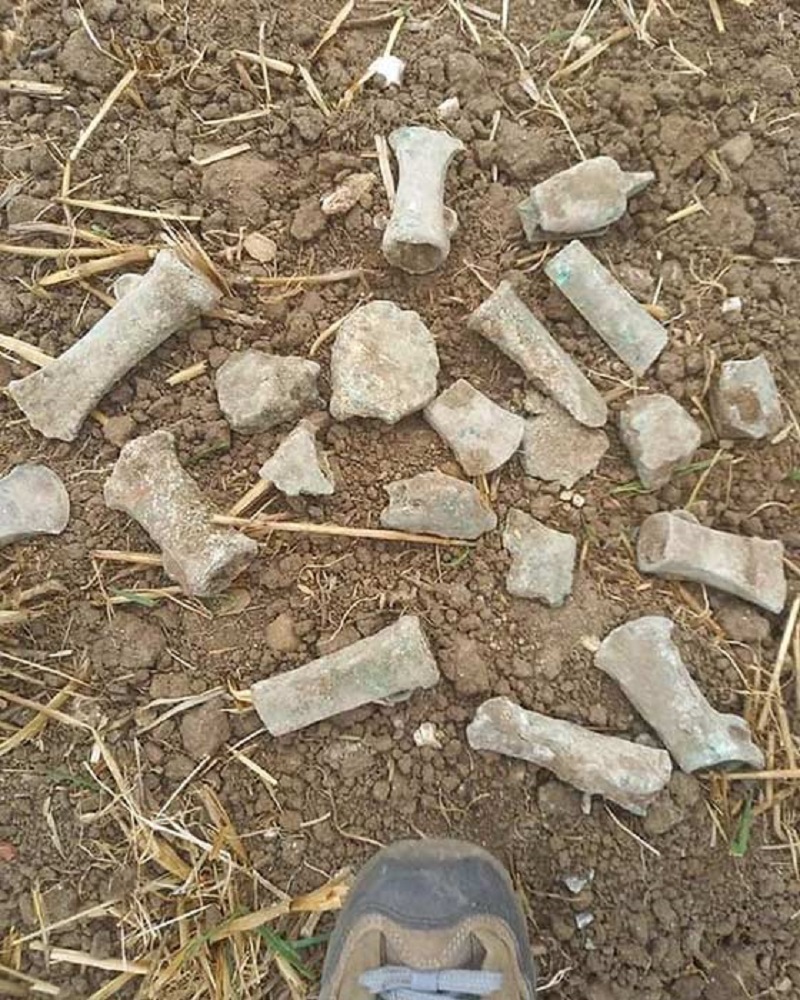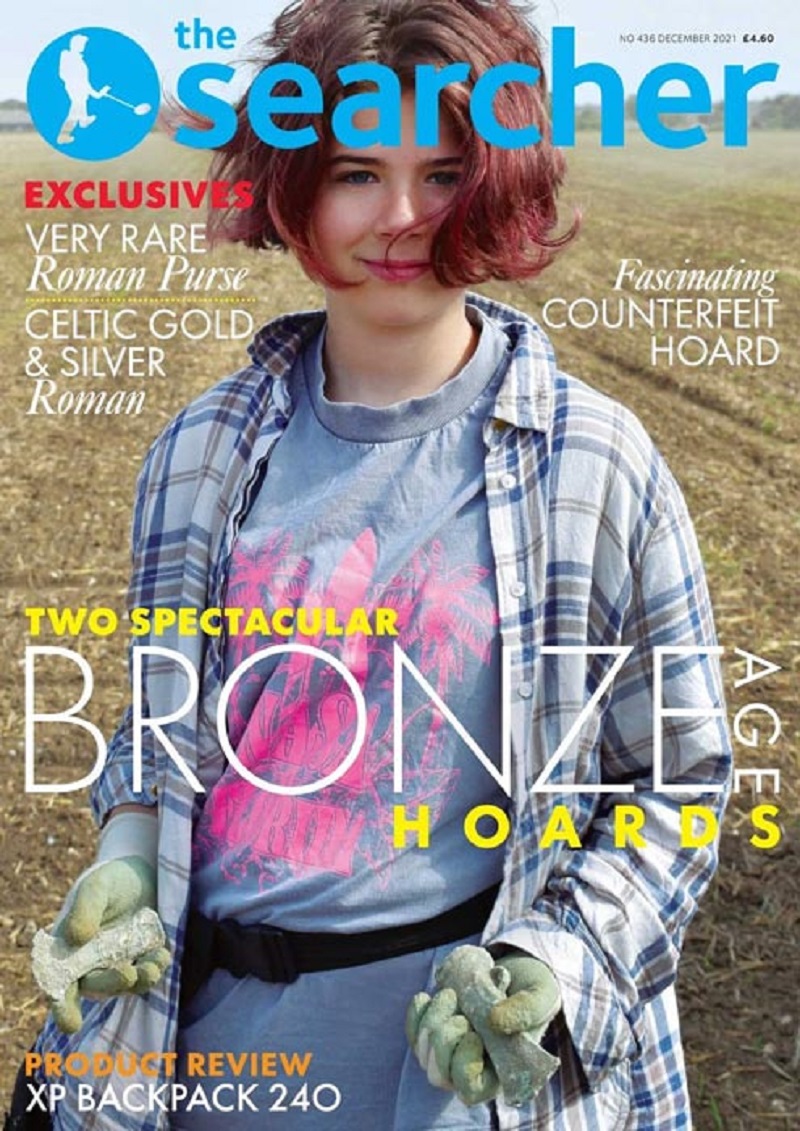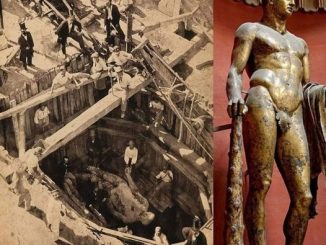Her metal detector went crazy. Milly Hardwick, a 13-year-old English girl, discovered an ancient treasure. This September, Milly identified a rare Bronze Age archaeological treasure in a field near Royston, on the Hertfordshire/Cambridgeshire border in England. There, in “Milly’s Field” as it should now be called, archaeologists unearthed some 200 Bronze Age artifacts. The question now is whether this Bronze Age treasure is a treasure trove or not? If so, Milly and her father will get rich quickly.
I’m not sure if this is a story about beginner’s luck or maybe, a poignant reminder that you really have to be in it to win it. Young Milly discovered the rare Bronze Age hoard of some 65 ax heads on her third exploring trip with her father. Now, British archaeologists have unearthed around 200 Bronze Age artifacts from surrounding archaeological sites. Together, the artifacts are being considered by authorities as a potential treasure trove.

Some ax heads were in a Bronze Age hoard found by Milly Hardwick on her third metal detector outing. ( Milly Hardwick / Royston Crow )
Unearthing Bronze Age treasures from 1,300 BC
The first Bronze Age treasure Milly found in September during an exploring trip with her father included a collection of ax heads dating to around 1,300 BC. Another group of discoverers, on the same field trip, were scanning near Milly’s axes when they identified a second potential Bronze Age treasure. The BBC reports that the collection of Bronze Age artifacts has now been sent to the British Museum for analysis and accurate dating.
Following UK metal detecting regulations for the line, the team of detectorists reported their find to the landowner, who gave them permission to detect on his land. The discovery was then reported to the local coroner’s office. The very next morning, a team of professional archaeologists from Cambridgeshire County Council and Oxford Archeology East arrived at the site. The next day, both sites were excavated and the treasures were revealed in all their ancient glory after spending 3,300 years in darkness!

Milly Hardwick holds up some metal detectors she found in a photo taken by her mother Claire. (Claire Hardwick / Royston Crow)
A very interesting discovery
Royston Crow spoke to Councilor Lorna Dupré, chair of the council’s environment and green investment committee. Dupré said we can “confirm that what we believe to be two Bronze Age hoards containing around 200 artifacts have been found on land near Royston”. She added that the find is being treated as “two separate, but related, potential treasure hoards” as defined by the UK Treasure Act 1996.
Dupré said the two treasures were a “very exciting discovery.” What is special about this collection of Bronze Age hoards is the wide variety of tools and weapons that have been identified. Archaeologists found “holed ax heads, bladed ax heads, cake ingots and blade fragments, all made of copper alloy.” During the Bronze Age in Britain, traditional alloys were made from copper and tin. Although this alchemy was practiced as early as 3000 BC, bronze weapons, tools, and ritual artifacts were not made on a large scale until much later, in the so-called Bronze Age, from 2,500 BC to 800 AD.
Through luck and fame as a promising young metal detector, Milly Hardwick landed on the cover of The Searcher magazine. (Finder Magazine)
Treasure or not? This is the big money question!
Milly Hardwick and her father followed UK treasure discovery procedures by immediately reporting their discovery to the local coroner’s office, even though they had 14 days to do so. Smithsonian reports that the coroner’s office is now responsible for determining whether these discoveries officially qualify as treasure through the British Portable Antiquities Program.
Discoverer finds Bronze Age treasure with sword in Scotland
Bronze Age coins: Early metal artifacts that may have been Europe’s first currency
Once the collection has been assessed and valued, if it is indeed declared a treasure it will be a bad day for the Hardwicks. At times like these, British museums will line up to buy collections of artifacts. If this happened, the young metal detectorist said she would share the income with the field owner, but did not mention that her old father would receive a large amount of money, even if it was only half a cent. Typical teenager!



